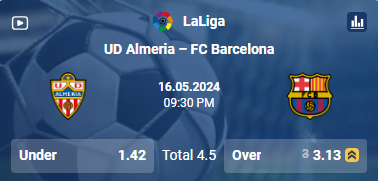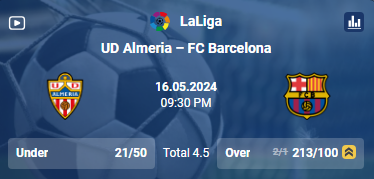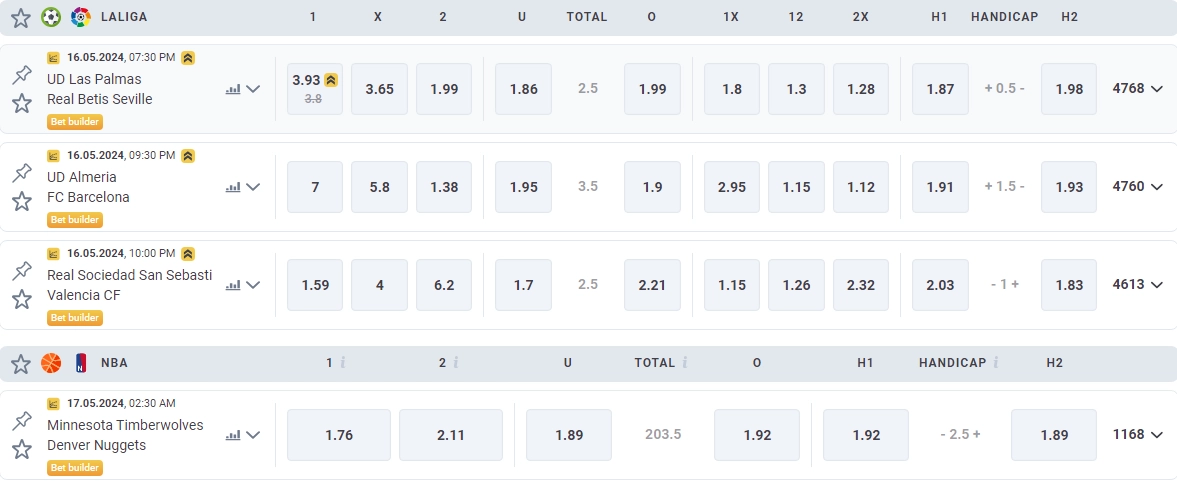If you are planning to start betting, it is important to know the Odds. So what are Odds? In probability theory, odds provide a measure of the likelihood of a particular outcome. Odds are commonly used in gambling and statistics.
However, we are mainly interested in odds related to sports betting. I could give formulas, mathematical theories here, but we will only deal with odds related to sports betting. Well, maybe there will be some theory. Just a little, I promise.
Table of Contents
What are Betting Odds?
Betting Odds represent the probability of an event occurring and determine the potential payout for a successful bet. This is a key concept in gambling and sports betting. Odds are closely related to Probability theory and the Gambling mathematics, which form the basis of how odds are calculated and interpreted.
At its core, betting odds are a way of expressing the probability of an event happening. For example, if the odds of a team winning a football match are 2.5 (in decimal odds format), it means that the probability of that team winning is 40% (1 divided by 2.5). The higher the odds, the less likely the event is to occur, but the potential payout for a winning bet is also higher.
I know, it may seem complicated and it was so for me too. If that’s not interesting enough, scroll down the page to the next headline. However, I would like to impart all my knowledge here, so we need to mention at least some theory.
Odds play an important role throughout gambling, including sports betting, horse racing and casino games. They are used by bookmakers to determine the terms of a bet, and by bettors to determine the potential risk and reward associated with placing a bet. That’s why it’s important that you understand it well. I have tried to make this article as short as possible and describe only the essentials. But this is such an important topic that I couldn’t leave out many things.
The odds are closely related to several other important things in gambling. Fixed-odds betting, for example, is a type of betting where the payout is determined at the time the bet is placed, based on the odds offered by the bookmaker. Parimutuel betting, on the other hand, involves pooling bets together and dividing the payout among the winning bettors based on the final odds.
Other related things include Gambling mathematics, which encompasses the mathematical principles and formulas used to calculate odds and probabilities, and probability theory, which is the branch of mathematics that deals with the analysis of random events and uncertainties.
Well. End of theory. This should interest you more.
Types of Odds Formats
There are three main types of odds formats used in betting: American Odds, Decimal Odds, and Fractional Odds. Each format presents the same information in a slightly different way, and in this section I will help you understand how to read and interpret each one.
American Odds (or Moneyline Odds) are the commonly used format in the United States. The form of writing is presented with the addition of a “+” or “-” sign before the number. Odds with “-” indicate the favorite of a given match, and with “+” the team or player starting from the underdog position. A positive number shows how much you would win on a $100 bet while a negative number indicates the amount you’d have to wager to win $100. For instance if the odds are 150 a $100 bet would earn you $150 in profit. On the hand if the odds are -200 you’d have to bet $200 to make $100, in profit.

Decimal Odds, (or European Odds), are the most common format used in Europe, Australia, and Canada. They represent the total payout, including the original stake, for a winning bet. For example, if the odds are 2.50, a winning $100 bet would return a total of $250 ($150 in profit plus the original $100 stake). To calculate the potential profit, simply subtract 1 from the decimal odds and multiply by your stake.

Fractional Odds, also known as British Odds or Traditional Odds, are the most common format used in the United Kingdom and Ireland. They represent the ratio of the amount of profit won to the stake. For example, if the odds are 3/1 (read as “three to one”), a winning $100 bet would win $300 in profit, for a total return of $400. If the odds are 1/4 (read as “one to four”), a winning $400 bet would win $100 in profit, for a total return of $500.

Although different odds formats look different, they all show the probability and potential payout. You need to know them if you want to compare odds at different bookmakers. But the truth is that almost all bookmakers I’ve played at give you the option to change the type of odds to the one you know best.
In the next section, we’ll explore how to calculate payouts and winnings using each of these odds formats, with specific examples and step-by-step calculations.
Calculating Payouts and Winnings
The calculation process differs slightly depending on the odds format being used.
For American Odds, if the odds are positive, the calculation is:
- (Odds / 100) * Stake = Profit
- Profit + Stake = Total Payout
Example: If the odds are 150 and you bet $100, your potential profit would be (150 / 100) * $100 = $150, and your total payout would be $150 + $100 = $250.
If the American Odds are negative, the calculation is:
- (100 / Odds) * Stake = Profit
- Profit + Stake = Total Payout
Example: If the odds are -200 and you bet $200, your potential profit would be (100 / 200) * $200 = $100, and your total payout would be $100 + $200 = $300.
For Decimal Odds, the calculation is simple:
- Odds * Stake = Total Payout
- Total Payout – Stake = Profit
Example: If the odds are 2.50 and you bet $100, your total payout would be 2.50 * $100 = $250, and your potential profit would be $250 – $100 = $150.
For Fractional Odds, the calculation is:
- (Numerator / Denominator) * Stake = Profit
- Profit + Stake = Total Payout
Example: If the odds are 3/1 and you bet $100, your potential profit would be (3 / 1) * $100 = $300, and your total payout would be $300 + $100 = $400.
Simple? I hope so.
Converting Between Odds Formats
Now that you know what types of odds are and how to calculate payouts, let’s see how to convert between different odds formats. This is quite simple if you know the formulas. So:
To convert American Odds to Decimal Odds:
- If the American Odds are positive: (American Odds / 100) + 1 = Decimal Odds
- If the American Odds are negative: (100 / -American Odds) + 1 = Decimal Odds
Example: If the American Odds are 150, the Decimal Odds would be (150 / 100) + 1 = 2.50. If the American Odds are -200, the Decimal Odds would be (100 / 200) + 1 = 1.50.
To convert Decimal Odds to American Odds:
- If the Decimal Odds are greater than 2: (Decimal Odds – 1) * 100 = Positive American Odds
- If the Decimal Odds are less than 2: -100 / (Decimal Odds – 1) = Negative American Odds
Example: If the Decimal Odds are 2.50, the American Odds would be (2.50 – 1) * 100 = 150. If the Decimal Odds are 1.50, the American Odds would be -100 / (1.50 – 1) = -200.
To convert American Odds to Fractional Odds:
- If the American Odds are positive: American Odds / 100 = Fractional Odds
- If the American Odds are negative: 100 / -American Odds = Fractional Odds
Example: If the American Odds are 150, the Fractional Odds would be 150 / 100 = 3/2. If the American Odds are -200, the Fractional Odds would be 100 / 200 = 1/2.
This article has some theory and mathematical formulas. I wanted to teach you how to use these formulas. However, if you don’t want to do it yourself, here I have prepared an odds calculator that will do it all for you.
Important!
Let’s stop for a moment to learn how to calculate probability. We will need this later. Since you already know how to convert between different odds formats, we will focus here only on decimal odds. If you use others, just convert to decimal.
What probability is indicated by the odds of 2.70? We use the formula:
1/ odds * 100% = probability,
so in this case 1/2.70 * 100% = 37%.
Other examples:
- Odds 3.40 – probability: 1/3.40 * 100% = 29.4%
- Odds 2.50 – probability: 1/2.50 * 100% = 40%
Clear? I hope so, so let’s move on.
What is Vigorish?
Vigorish, also known as “vig” or “juice,” is the commission that bookmakers charge for accepting bets. It is essentially the price that bettors pay for the opportunity to place a wager. The vigorish is built into the odds, ensuring that the bookmaker makes a profit regardless of the outcome of the event.
In American Odds format, the vigorish is often represented by the difference between the positive and negative odds on either side of a bet. For example, if the odds for a game are 110 for the underdog and -130 for the favorite, the bookmaker is charging a vigorish of approximately 4.76% on each side of the bet.
To calculate the implied probability with the vigorish included, you can use the following formula:
Implied Probability = Risk / (Risk + Win) * 100
Example: If the odds are -130, the risk is $130, and the win is $100. The implied probability would be 130 / (130 + 100) * 100 = 56.52%.
Bookmakers use the Vigorish to ensure they have an edge and can stay profitable in the long run. It’s an aspect to think about when assessing a bets worth as it directly affects the potential payout and what a bettor can expect to win.
You can read more about how Vigorish works in my new article.
How do bookmakers set the odds?
Bookmaker odds are set by analysts, who analyze the probability of an event. If the probability is low, the odds will be higher.
Bookmakers set the odds in such a way that by analyzing the match they take what probability a bet has. How is this done? It’s all about analysis and information that flows down to the bookmaker. The bookmaker’s employees responsible for the odds are specialists in specific sports. They are analysts who are in charge of making sure that the right odds are selected for betting. How does a bookmaker calculate the odds?
Above you learned the formula for how to check the probability of a bet. Having knowledge of the relationship, you can calculate the bookmaker’s odds. What is needed for this? First of all, you need to know the probability of the bet and then the specific data can be substituted into the formula:
1/probability = odds
To illustrate how this looks in practice I will use a concrete example.
We assume that Juventus has a 35% chance of winning the match. Substituting the data into the above formula, we get the result of 2.85 According to the calculator, it follows that this bet should have odds of 2.85. Now the bookmaker will add his margin. But I explained this further in this article.
Advanced mathematical models and algorithms are also used to determine the odds. To develop accurate predictions and assign probabilities to each possible outcome, these models evaluate a wide range of interchangeable and historical data. Based on such measures, bookmakers are able to set odds that accurately reflect the actual probability of an event while providing a profit margin.
Overround and the Bookmaker’s Margin
Bookmakers have a little something called “overround” or “bookmaker’s margin,” which gives them an edge when they set odds. It’s essentially the difference between the true likelihood of an event and the probability indicated by the odds. This overround ensures that bookies can rake in profits no matter how things play out.
To work out the overround, you start by converting the odds for all potential outcomes of an event into their implied probabilities. Let’s say we’re looking at a tennis game where Player A has odds of 1.50 and Player B has odds of 2.75. The implied probabilities would be;
Player A: 1 / 1.50 = 0.6667 or 66.67%
Player B: 1 / 2.75 = 0.3636 or 36.36%
The total of these implied probabilities adds up to more than 100% (66.67% + 36.36%), specifically, it’s at 103.03%. The excess above this magic number, which in this case is at about 3%, represents the bookmaker’s overround.
This overround stands for the potential profit that bookies can pocket. Using our example above, if bettors wagered in line with these probabilities, the bookie would secure a tidy profit of around 3% regardless of who wins the match.
It’s worth mentioning that the margin can differ among bookmakers and even within various markets of the same event. A higher margin suggests a higher potential profit for the bookmaker but lower expected returns for the bettor. Conversely, a lower margin offers better value for the bettor while reducing the profit margin for the bookmaker.
Using Odds in Betting Strategy
Knowing the odds plays a role, in crafting a winning betting strategy. By examining the odds and matching them with your estimations of possible outcomes you can pinpoint valuable bets and make better informed choices when betting.
In odds based betting strategies a crucial notion to grasp is the concept of expected value (EV). This term refers to the amount of money one can anticipate winning or losing per bet in the long term. It is determined by considering the odds and your evaluation of the likelihood of each outcome. To compute the expected value you multiply the probability of each outcome by its payout and then deduct the initial stake.
For instance if you think a team has a 60% likelihood of winning a game and the odds for their victory are 2.50 the expected value on a $100 wager would be:
(0.60 * $250) – $100 = $50
A positive expected value indicates a profitable bet in the long run, while a negative expected value indicates an unprofitable bet.
Another important concept in odds-based betting strategies is the idea of value betting. Value betting involves identifying situations where the odds offered by a bookmaker are higher than your own assessment of the probability of an outcome. By consistently placing bets with positive expected value, you can potentially make a profit over time, even if not every individual bet is successful.
Odds can also be used in more advanced betting strategies, such as arbitrage betting and matched betting. Arbitrage betting involves placing bets on all possible outcomes of an event with different bookmakers, in order to guarantee a profit regardless of the result. Matched betting involves taking advantage of promotions and bonuses offered by bookmakers to place risk-free bets and extract a profit.
Other betting strategies that incorporate odds analysis include the Martingale system, which involves doubling your stake after each losing bet, and the Fibonacci system, which involves adjusting your stake based on the Fibonacci sequence. Spread betting, Asian handicap, and Due Column betting are specific types of bets that use odds to level the playing field and increase the excitement of betting. Betting systems such as Parlay and Progressive parlay involve combining multiple bets to increase the potential payout, but also come with higher risks.
Ultimately, the most successful betting strategies involve a combination of odds analysis, disciplined bankroll management, and a deep understanding of the sports and events you are betting on.
Which bookmakers offer the best odds?
You can, of course, compare the odds yourself. Just go to the websites of several bookmakers and check. You can also use my reviews and read about each company. For starters, check out this article about the best sports betting sites. When I create a ranking, odds are one of the key elements of the evaluation. To give you a quick answer, 20bet, 22bet, FEZbet and bookmaker Rabona usually offer the best odds. Click on the links above to go to my review of each of these companies.
It’s also worth mentioning a few other concepts that are closely related to the topic of betting odds. If you are interested in the topic and want to explore it further here are some interesting topics from Wikipedia:
- Credence refers to an individual’s subjective belief in the probability of an outcome, which is crucial in making betting decisions.
- The Proebsting’s paradox demonstrates how seemingly favorable odds can lead to cert.:n losses, highlighting the importance of a thorough understanding of the Mathematics of bookmaking.
- The concept of Bernoulli trial is the foundation for mathematically modeling many gambling games.
